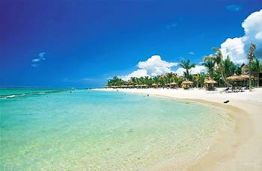

The giant continent of Africa conjours up images of wild animals roaming giant savannahs, with herds of elephants lazily grazing along the trees, lions slumbering in the hot midday sun and leopards chasing their prey.
Well, if you wish to visit the continent for ‘this’ very reason, then it is suggested you should visit these great wildlife areas.
Hermanus and Mossel Bay, Western Cape: Here you can have rendezvous with the great white sharks – queens of the dark blues seas. Visitors are allowed to ‘meet’ these carnivorous creatures in a special diving cage off Dyer Island in the so-called ‘Shark Valley’.
Private game reserves in Mpumalanga, Limpopo Province, the North-West, and Botswana: Here you will be at a safe distance from the great big cats or more specifically the King of the Jungles. And speaking of the jungles, well, that is another story, altogether.
Though, you will be at a safe distance from the hungry beasts, but the growling noise coming from that pit will shake your jeep like a empty tuna can.
Private game reserves, the North-West, Mpumalanga, KwaZulu-Natal: This is one place, where you can play host to the big white cat to lunch.
Simply leave a big piece of meat onto your front porch of your lodge, and soon you will see a leopard casually strolling towards it. While wild animals roam freely in this area, just make sure, that you do not become their lunch or even dinner.
Kruger National Park, Hluhluwe-Umfolozi Reserve: Now this is a heart beating experience. Tracking an animal that can grow as large as a small tank and weighing approximately the same, can literally, be a dangerous activity, if you are not careful.
Rhinos can smell humans up to 800 meters or 2,600 feet away. So, if you want to get home, safe and sound, then it is advisable to remain a great distance from the great beast.




 Posted by arsalaan
Posted by arsalaan 








